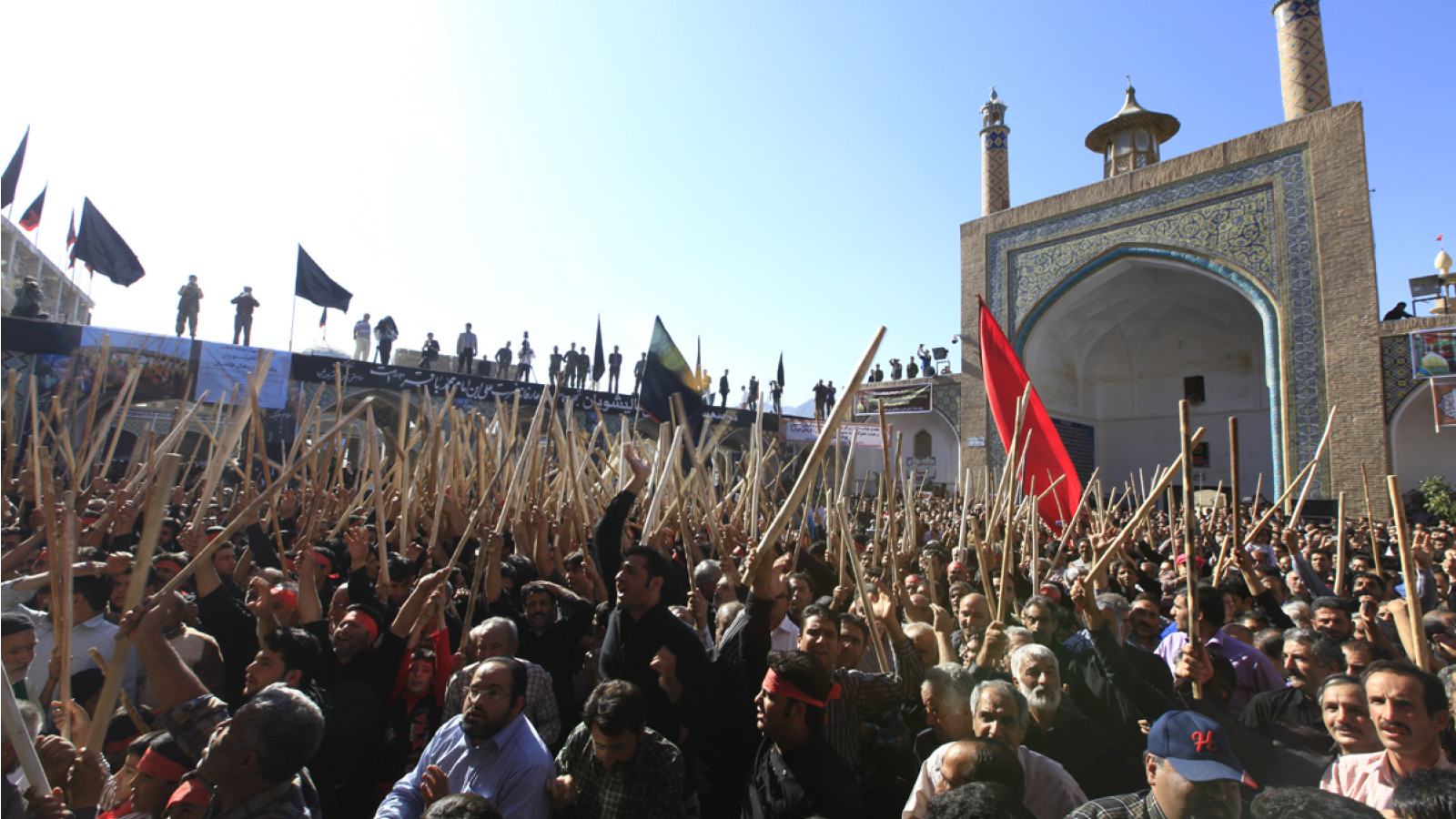
There are some nearby villages in the west of Kashan City which is called Aredhal altogether. The center of these villages is Mashhad-e Ardehal that is also known as Mashhad-e Qali (means carpet) by the locals. Being the martyrdom place of one of the Shia’ Imamzadehs is why this place is called Mashhad which literary means the place of Shahadat (martyrdom).
The ceremony of Qalishuyan is one of the ritual ceremonies dating back to approximately one thousand years ago in Mashhad-e Ardehal village. This ritual has been inscribed on the UNESCO Cultural and Spiritual Heritage List. Being also known as “Jomeh Qali” (literary means a Friday which is devoted to carpet), Qalishuyan ritual is in fact a symbolic show of the martyrdom happening, funeral and burying Imamzadeh Soltan Ali which is hold every year by Kashan and Khave Ardehal inhabitants. In the beginning of 2nd century A.H. Imam Mohammad Baqer, the fifth Imam of Shia’, sent his son, Ali, by public request, to Kashan and Fin, in order to promote Islam and guide people. But he was martyred by the contemporary rule of the region. The region of Aznaveh village which become then famous as Ghatlegah (literary means shamble, the place of killing) is one of the holly and spiritual places located in 4km to the holly shrine of him. After this happening, some of Fin people who were the inviters and enthusiastic of him carried his body in a carpet on their shoulders while fighting with infidels. And some others dispersed the enemies to open the way for the population who wanted to wash the bloody carpet in a stream and bath the body before burying. The ceremony is in fact the symbol of washing the blood of Ali ibn Mohammad Baqer.
Qalishuyan ritual is the only religious ceremony that is hold by the headquarters based upon the solar calendar in Iran, in the 2nd Friday of the autumn, often between the second and the third weeks (the closest week to Mehr 17), between ninth and fifteenth days of Mehr. One week before holding the ceremony, in the first Friday of Mehr, which is known as Jaar Friday (Jaar means public call for an event), Kashan people are invited to the ceremony. The inhabitants of Kashan, Khaveh village and other surrounding villages and cities, especially along the desert, are all gathered in this ceremony, they consider their presence in and watching Qalishuyan ritual to be one of the most important religious orders so that in their beliefs the reward of the pilgrimage to Soltan Ali Holly Shrine is equal to making a pilgrimage to Karbala and the presence in Imam Hossain Holly Shrine. Wearing a black cloth with a piece of wood in their hands, the participants are prepared for the ceremony in the Sahn of Amer ibn-Naser, one yard inside Soltan Ali holly shrine, and they are finally gathered in Safa Yard, in a certain manner, after going to and returning from Imamzadeh Hossain, one of Imam Zein ol-Abedin’s sons, located near to the holly shrine. At first, the trustees of Imamzadeh and Khaveh village hold the rituals of reading Rhode and mourning, they receive the rolled holly carpet from Khaveh inhabitants while taking it through Safa porch to the Safa Yard. They take the carpet to the monument of Imamzadeh Hossain to wash it in a certain stream while shaking the wood and chanting the name “Hossain” that indicates a symbolic fight with killers. The carpet is again delivered to the trustees in Safa yard, after washing ceremony. The ceremony is finally finished in Finiha yard after turning several times around the yard while mourning. Interesting among the other events around Qalishuyan ritual is the establishment of a bazar for one week to ten days in the neighborhood of Soltan Ali monument buying from which may bring blessing according to the beliefs of people. It also should be said that the tradition of washing carpet gives the ritual an Iranian-nationalistic aspect to the extent that some believe that holding this ceremony in Mehregan is tightly related to the story of Siavash and the worshiping ritual of Tishtar (the God of Rain) and requesting the rain. It is also possible this place to be one of the ancient temples of Tishtar before burying of Soltan Ali and it was turned into the current Islamic form after the appearance of Islam and the accordance of the happenings around Imamzadeh Ali.